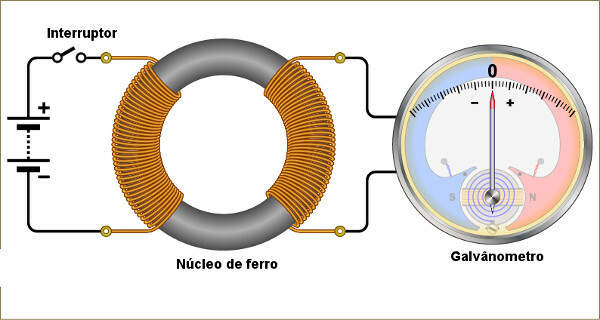The First Law of Thermodynamics deals with what it takes for work to be turned into heat.
It is based on the principle of energy conservation, which is one of the most important principles of physics.
This energy conservation takes place in the forms of heat and work. It makes it possible for a system to conserve and transfer energy, that is, energy can increase, decrease or remain constant.
The First Law of Thermodynamics is expressed by the formula
Q = τ + ΔU
Where,
Q: heat
τ: work
U: variation of internal energy
Thus, its foundation is: heat (Q) results from the sum of work (τ) with the variation of internal energy (ΔU).
It can also be found as follows:
ΔU = Q - W
Where,
U: variation of internal energy
Q: heat
W: work
The foundation results in the same: the variation of the internal energy (ΔU) results from the heat exchanged with the external medium minus the work (W) performed.
That means,
1) as for heat (Q):
- If the heat exchanged with the medium is greater than 0, the system receives heat.
- If the heat exchanged with the medium is less than 0, the system loses heat.
- If there is no heat exchange with the medium, that is, if it is equal to 0, the system neither receives nor loses heat.
2) regarding work (τ):
- If the work is greater than 0, the volume of something exposed to heat is expanded.
- If the work is less than 0, the volume of something exposed to heat is reduced.
- If there is no work, that is, if it is equal to 0, the volume of something exposed to heat is constant.
3) regarding the variation of internal energy (ΔU):
- If the internal energy variation is greater than 0, there is an increase in temperature.
- If the internal energy variation is less than 0, there is a decrease in temperature.
- If there is no change in internal energy, that is, if it is equal to 0, the temperature is constant.
It is concluded that the temperature can be increased with heat or with work.
Example
The heating of gases causes the machines to start up, that is, to carry out work in a plant, for example.
This happens in the following way: the gases transfer energy inside the machines, which causes them to increase in volume and from there activate the mechanisms of the machines. When activated, the mechanisms start to work.
Read too
- Thermodynamics
- Carnot Cycle
- Hess' Law
Laws of Thermodynamics
The laws of thermodynamics are four. In addition to the first, which we are dealing with, there are:
- Zero Law of Thermodynamics - deals with the conditions for obtaining thermal equilibrium;
- Second Law of Thermodynamics - deals with the transfer of thermal energy;
- Third Law of Thermodynamics - deals with the behavior of matter with entropy close to zero.
Exercises
1. (Ufla-MG) In a reversible gaseous transformation, the variation of the internal energy is + 300 J. There was compression and the work done by the pressure of the gas is, in module, 200 J. So it's true that gas
a) gave 500 J of heat to the medium
b) gave 100 J of heat to the medium
c) received 500 J of heat from the medium
d) received 100 J of heat from the medium
e) underwent an adiabatic transformation
Alternative d: received 100 J of heat from the middle
See too: Exercises on Thermodynamics
2. (MACKENZIE-SP) Keeping a narrow opening in your mouth, blow your hand vigorously now! It saw? You have produced an adiabatic transformation! In it, the air you expelled underwent a violent expansion, during which:
a) the work performed corresponded to the decrease in the internal energy of this air, as there was no heat exchange with the external environment;
b) the work carried out corresponded to the increase in the internal energy of this air, as there was no heat exchange with the external environment;
c) the work carried out corresponded to the increase in the amount of heat exchanged by this air with the medium, as there was no variation in its internal energy;
d) there was no work carried out, since the air did not absorb heat from the environment and did not suffer any variation in internal energy;
e) there was no work carried out, since the air did not yield heat to the medium and did not suffer any change in internal energy.
Alternative a: the work carried out corresponded to the reduction of the internal energy of this air, as there is no heat exchange with the external environment.
See too: adiabatic transformation


